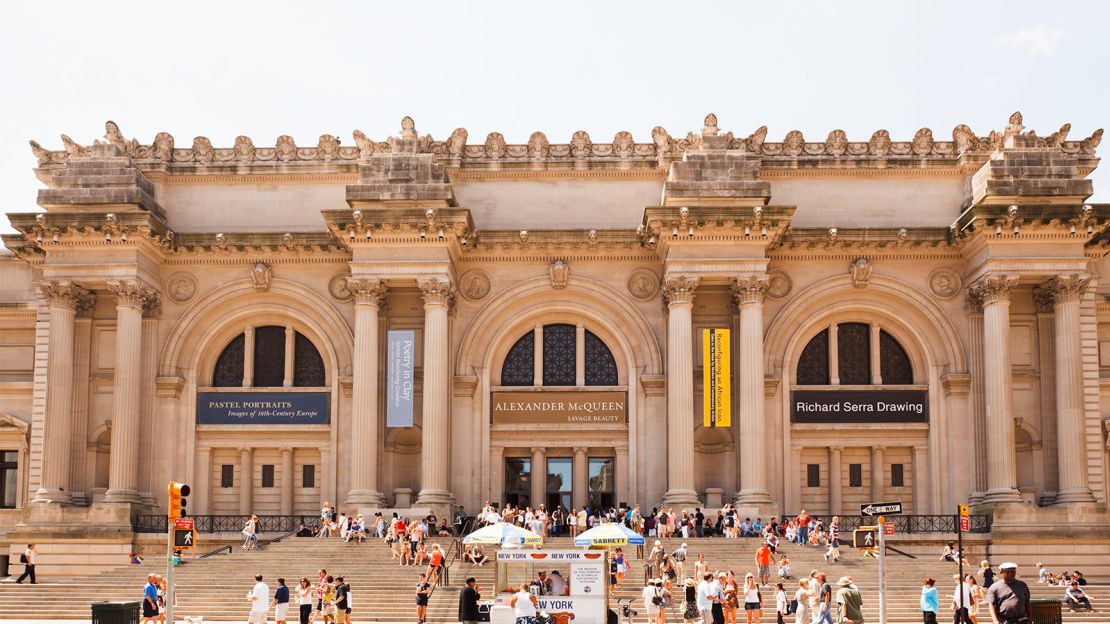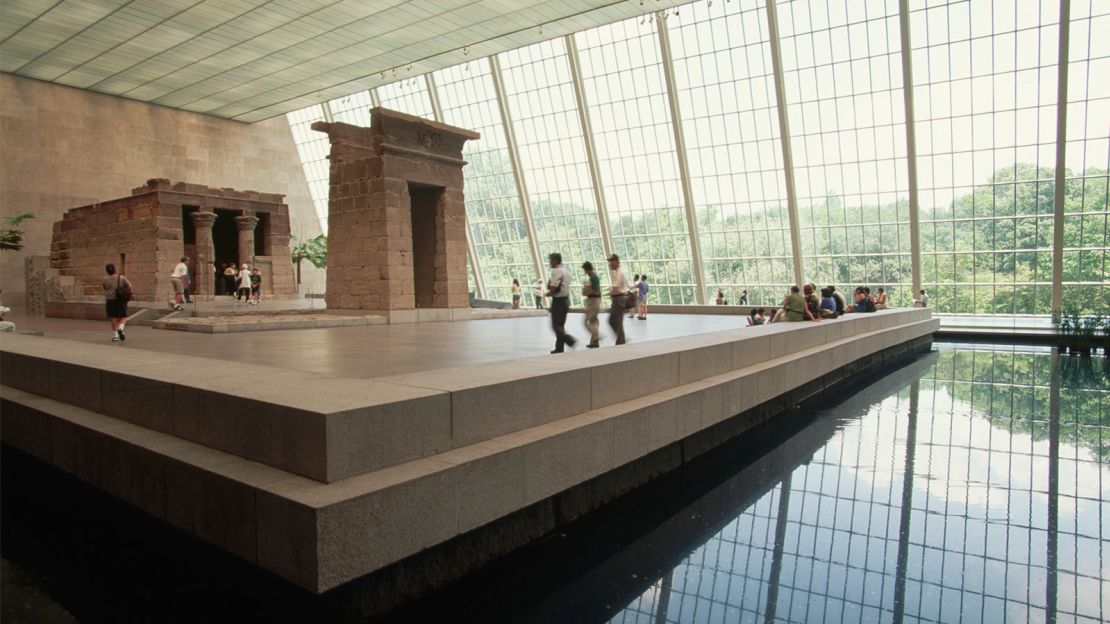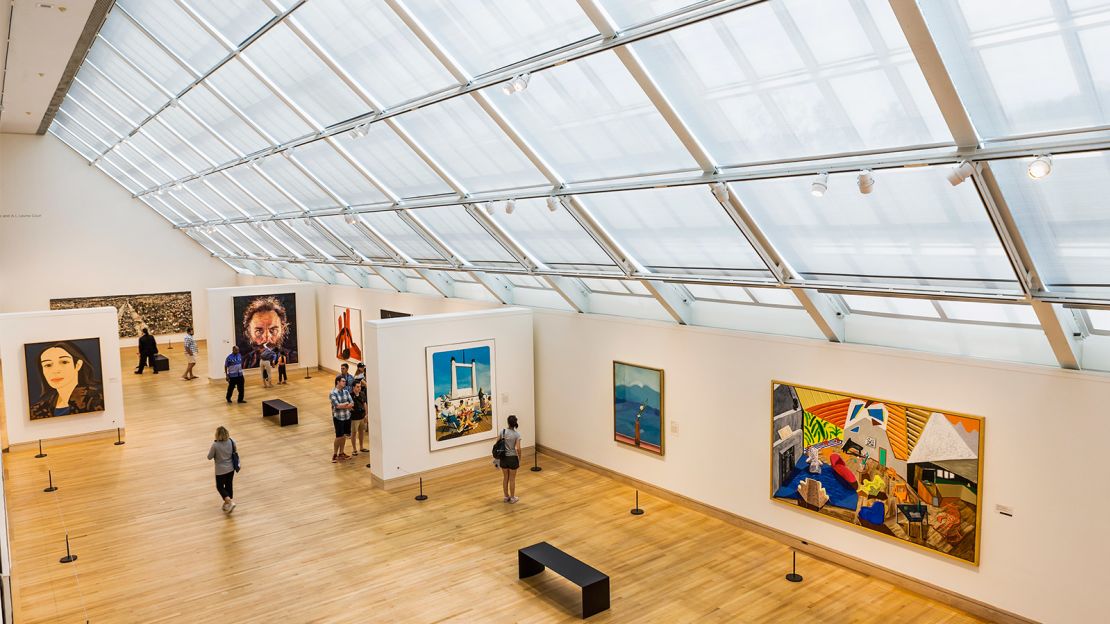The Metropolitan Museum of Art is one of the most iconic museums in the world. Nestled into the eastern side of Central Park, it epitomizes uptown grandeur while showcasing a world-class art collection. Covering over two million square feet, the Met features 5,000 years worth of art.
Given the size of its permanent collection, its wide-ranging exhibitions and its two other museums, the Met Breuer and the Met Cloisters, the Met is impossible to cover in one visit, and you should plan your trip ahead of time.
We spoke with art world experts on the best ways to see the museum, must-see pieces, best photo spots and the hidden gems.
How to ‘do’ the Met

The Met is open seven days a week, unlike most New York City museums. Weekday mornings see the lowest foot traffic, says Meryl Cates, senior publicist for the Met. There are also high-traffic times of year you may want to avoid, namely the holiday travel season.
Plan your visit for a day “when you think no one else is there — so that means during the week and when people are at work or off at school,” suggests Judith Walsh, founder of ART SMART, which conducts museum and gallery tours throughout New York and other cities. “And to avoid weekends in the afternoon.”
Visiting the museum on a Friday or Saturday evening will put you among fewer tourists and more native New Yorkers, explained Sandra Jackson-Dumont, chairman of education at the Met.
Billed as “New York’s Night Out,” Friday evenings feature special tours and cultural events, such as jazz performances. The museum is open Friday and Saturday evenings until 9 p.m.
Where to go
The entrance to Met is called the Great Hall and leads in three directions: left to Greek and Roman Art, right to Egyptian Art, or forward to Medieval art. Most guests begin exploring the museum via one of these adjacent galleries first.
However, Walsh recommends instead heading immediately to one of the galleries in the periphery of the museum — for example, to Modern and Contemporary Art or to The American Wing. “It takes a longer trip but you end up seeing less people,” she said. “That might be one way, if someone wants to avoid the crowds and have a serene visit.”
If you would prefer a chaperoned visit, Jackson-Dumont recommends taking advantage of one the Met’s multiple daily guided tours. These tours are free with museum entry and available in 15 languages. The guided tours will touch upon highlights certain collections, such as Modern and Contemporary Art or Arts of Ancient Egypt.
If visiting the museum with kids, consider picking up a free family guide booklet at the front desk or downloading one off the Met’s website in advance. “There’s been a series of objects that have been chosen in various collections that help parents navigate the collection through the lens of a child,” Jackson-Dumont said of the family guides.
What you absolutely have to see

There is no shortage of world-famous works by artists like Mary Cassatt, Pablo Picasso, Claude Monet and Cindy Sherman. There are some pieces at the Met, however, that you may not see anywhere else in the world.
The Temple of Dendur, built to honor the Egyptian goddess Isis, is “the only [temple] in the Western hemisphere on view,” Walsh noted. The temple dates back to the reign of Augustus Caesar and was gifted to the Met from Egypt in 1967.
The period rooms hold fascinating treasures. The Paar room, for example, shows decorative arts from seventeenth- and eighteenth-century France. “It has a dog bed that was owned by Marie Antoinette, so the rumor goes,” said Nick Gray, CEO of Museum Hack.
“I often tell our clients to travel the world and see different places, just right there from the Met, are to explore the period rooms,” said Walsh. “Often you’ll be left alone in these beautiful rooms that were, say, King Louis’ bedroom.” Guests can also see a space designed by architect Frank Lloyd Wright.
What to do in New York City beyond Manhattan
Jackson-Dumont, the Met’s chairman of education, recommended a visit to the Moroccan courtyard. It was built within the Art of the Arab Lands gallery by craftsmen and opened in 2011. A YouTube video shared by the Met shows the intricate craftwork at hand. “It’s incredibly well-designed, beautifully articulated and, speaks to the Met’s commitment to placing works in their original context,” she said.
In the African gallery is “Between Heaven and Earth,” a large-scale work by El Anatsui which Jackson-Dumont called a “must-see.” The piece is made from “the seals from liquor bottles that have been flattened and perforated,” she explained. “It looks like a a drapery, but when you get closer you realize that it’s all of these metal pieces that are discarded materials from a particular community.”
Another noteworthy works include the first painting by Johannes Vermeer to enter the United States, “Young Woman with a Water Pitcher.” It is one of several Vermeers located within European Paintings and happens to be located in one of the furthest galleries at the Met, meaning not every visitor makes it over there, said Walsh.
Anywhere else in the world, an exhibition of Vermeers would draw “blockbuster lines,” said Walsh, adding that at the Met “you can stand alone in a room with a Vermeer, which in any other museum, is unheard of.”
Hidden gems

Given its size, there is plenty at the Met that a visitor would miss if they don’t look closely — or don’t know where to look.
There are two ‘hidden’ floors which visitors may not notice: one located in Chinese Art and one located in an American period room. “You literally have to stumble upon them,” said Walsh. “Those are areas that are really quite hidden, so you have to look for them. It’s fun to explore and find these places that you feel like you’re the only one who knows about them!”
To find the ‘hidden’ floor in Chinese art, “there’s a small, dark stairwell and an elevator that is back in the very far end of Chinese art in a dark corner and it’s so easy to miss,” explained Walsh. The other ‘hidden’ floor is in an American period room. “You just have to keep going up stairs and going up stairs and [then] find them,” she said.
These floors are not technically a secret — they are depicted on the Met’s map, which is given out free to visitors — but they’re easy to overlook thanks to all the information on it. “You’ll probably never notice the staircase on the map” unless you know where to look, said Walsh.
In addition to ‘hidden’ floors, there are individual pieces of work with storied histories. One sculpture located in one of the European galleries, “Adam” by Tullio Lombardo, is a showcase of the museum’s mastery at conservation. In 2002, “Adam” fell over in an accident in the middle of the night, explained Jackson-Dumont.
“The base of the sculpture, broke and the sculpture shattered across the floor, and there was an entire conservation effort done to kind of put them back together,” she explained. “For a period of time, it was almost like ‘CSI museum.’ They literally used the grid on the ground from the tiles to actually painstaking get together every tiny little shard of sculpture and put it back together.”
Thanks to “an incredible effort on behalf of scientists and conservators and curators,” the reconstructed “Adam” sculpture is on display and visitors “can still see where some of the little hairline fractures were,” Jackson-Dumont said.
Contemporary and Modern Art includes noteworthy works from Georgia O’Keeffe and Andy Warhol. There are lesser known treasures as well, such as “Kouros,” an abstract sculpture by Isamu Noguchi.
“It relates to a Greek statue [also called “Kouros”], another very popular highlight in the Met’s collection and yet it is completely modern,” said Walsh. “if you just walk past [Noguchi’s Kouros], you would have no idea what it is a sculpture of or a statue of.”
Best places to take photos
Just as important as absorbing some culture is proving on social media how much culture you have absorbed. Fortunately, there are plenty of locations to take great photographs at the Met.
The Velez Blanco Patio, which is reconstructed Spanish courtyard of a castle, is located near Watson library and close to the Great Hall. It has “lovely light” and is “not as popular, sort of off the beaten path,” said Walsh.
The impressive Temple of Dendur has “lots of natural light,” although Walsh noted it is also very busy.
Astor Court, also known as the Astor Chinese Garden Court, is another beautiful space that experts recommend visiting. It is a large open terrace with greenery, as well as furniture from the Ming dynasty. Like the Moroccan courtyard, Astor Court was built by a team of artisans directly within the gallery space. “Breathtaking” is what Walsh called it.
Indeed, there are no shortage of works at the Met which will take your breath away.




































